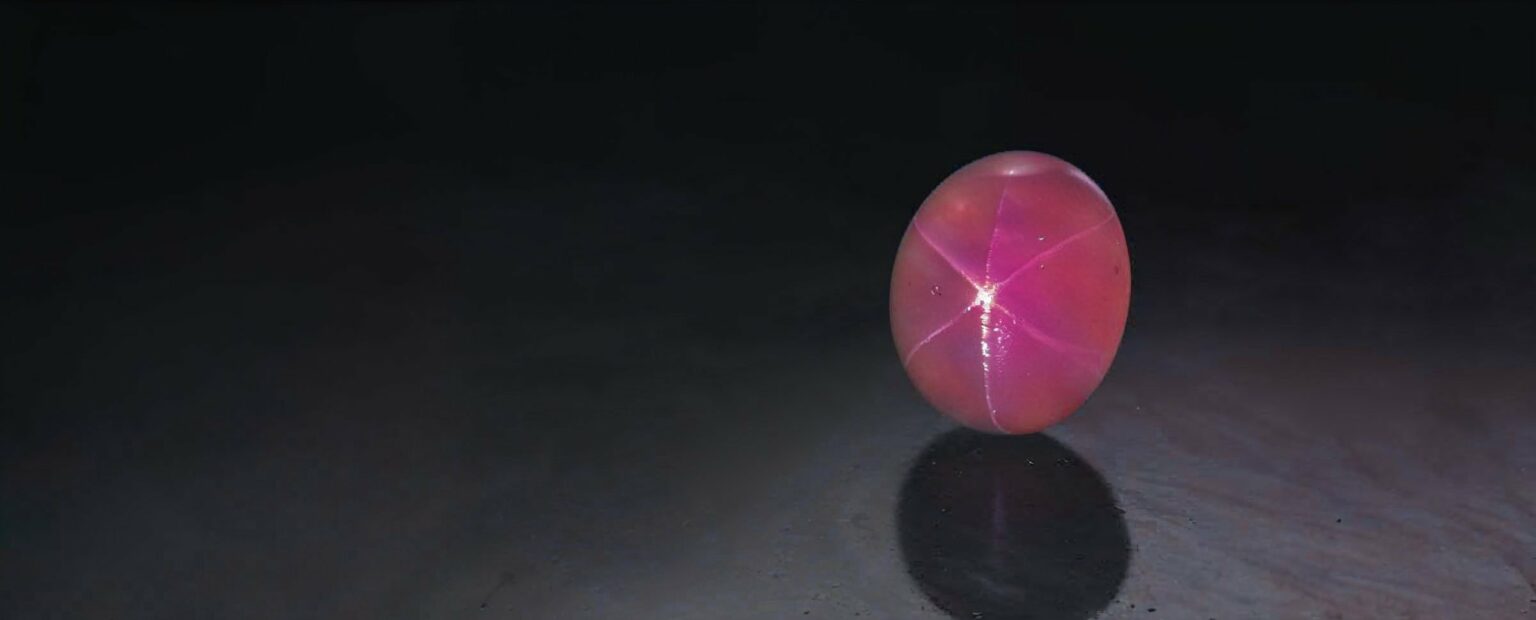Remember how for years the iron-clad price ratio of gold to silver was 35:1? Then when recently it spread to as much as 80:1, the ratio fell by the wayside. Nevertheless, the commodities world long lived by a certain price relationship between the world’s two most-coveted precious metals.
Well, believe it or not, there was a similar rule-of-thumb price ratio for the world’s two most-coveted gemstones, diamond and ruby. According to that rule, traceable at least as far back as the early 1600s and still observed around the turn of the century, a 3-5 carat ruby was to be priced 10 times higher than its diamond counterpart. (For 1-carat stones, the ratio was a mere 2:1; for stones over 5 carats, none was thought possible.)
However, there was an exception to the rule: star ruby. Where these stones were involved, the ratio could easily be stretched to 12:1 for 3-5 carat sizes.
Today, of course, the finest star ruby no longer commands anywhere near what its faceted ruby equivalent does. Indeed, faceted rubies no longer fetch what comparable diamonds do. Tastes have changed and with them precise market price formulas that lasted for centuries. We mention this discarded diamond and ruby pricing equation only to show in what high esteem star ruby was held for hundreds of years. According to books written in the very late 19th century, top-echelon 3-carat star rubies could easily bring $3,200 per carat, an impressive sum for the time, and one not too distant from their cost to jewelers nowadays. That price is presently quoted to us at $10,000-plus per carat. Judging from the acute scarcity of such stones, the price is probably too low. This gem has never been rarer and hopes for meaningful supply never more futile.
The Burma Benchmark
Relatively few of the rubies mined today are candidates for cutting into star stones. Most come from Thailand or East Africa and lack the one essential element needed to produce the star effect: rutile.
Why is rutile so important for the star effect? In corundum, the star is arranged in densely packed bundles of crisscrossing needles. If plentiful enough, these needles reflect light in such a manner as to give the stone a special silken sheen or chatoyancy. When cut in cabochon form, this light is concentrated into three rays that intersect at right angles to the direction of the needles and resemble a six-legged star. This play of light is called asterism.
As for lovers of star ruby, the only rubies with rutile in them are those from Burma and Sri Lanka. But Sri Lanka stones rarely possess the fine color of Burmese stones. Instead, they are mostly a not-too-desirable purplish red. As for the few rutile-rich Burmese crystals with fine color worthy of cutting into superb stars, these will invariably be heated to dissolve the rutile and thus make them far more suitable for faceting. The end result: a profound dearth of stellar star rubies.
This dearth does not bother most U.S. gem dealers. “The connoisseur for star ruby are in Europe,” says New York dealer Richard Orbach, Orbach Gem Corp. “I don’t get more than a couple of calls a year for this stone.”
Under Asian Skies
One reason given for Americans’ lack of interest in star ruby is that these stones look best in the intense sunlight of the Asian countries where they are mined. Dealers who buy rubies regularly in the Orient admit stones viewed there, especially star stones, often have a seductive pop that disappears in the light of a New York day. But those same dealers say fine star ruby holds its own under any sky.
The trouble is that such rubies are expensive. Although one can get away with wearing a 3-carat stone, the preferred minimum size for this species is 5 carats. Better-to-fine stones of this size will cost jewelers $4,000-$8,000 per carat. Those who custom-cut want the very best will have to pay $10,000 per carat. “It sounds like a lot of money,” says renowned New York cutter Reggie Miller, Reginald C. Miller Inc., “but a comparable quality 5-carat faceted Burma ruby can run $25,000 per carat today.”
Such prices generally turn off all but the most moneyed of Americans. Europeans don’t mind them anywhere as much, especially now when they are buying true gems in discounted dollars. Even so, star ruby does not have the popularity anywhere that it did in the 1950s, “the decade of star madness,” Orbach says.
But then star ruby was simply a fad. To regain staple gem status would take a full-scale resurgence of fashion formality. Star ruby is mostly a gent’s gem, one that was seen frequently in the 1930s in men’s dress sets, including studs and cuff links. For centuries before, the gem was associated with pomp, circumstance and wealth throughout the world. In fact, Firmin and gem and collector J. Pierpont Morgan assembled a major star stone collection which now sits in the American Museum of Natural History in New York.
The Silver Lining
What does a star ruby need to fetch $10,000 per carat? To begin with, a fine star, advises Miller, one “that is pencil sharp and not wide or blurry.” What’s more, all six legs of the star should extend to the base of the cabochon, in addition, the star should be centered and its main ray run the lengthwise direction of the oval. As for the star’s color, Miller says it should be silvery or milky white “with no or little, bleed-through of red.” Such perfect stars, unfortunately, are exceedingly rare, especially in stones with the most desirable Burma-red color.
Because Burma is the main provider of fine star rubies, this gem is expected to have a red the trade thinks of as Burmese. Think of that red as similar to that on a Marlboro box—full-blooded with no brown, hopefully but rarely no purple. And, perhaps, a tiny but tolerable tint of orange or pink. As stones deviate from this ideal, their value decreases.
Next, there’s clarity to consider. The best stones will be semi-translucent. Watch out, warns Miller, for surface imperfections, usually hair-line fissures that break the surface of the stone and can widen in the course of wearing. Such flaws present problems to cutters because polishing them in the wrong direction only makes them worse.
Last, pay close attention to cutting. Star rubies should be properly proportioned, not too flat on top and not too heavy on the bottom. “If too flat on top, stars seem to swim around too much under a single light,” Miller says. “If too heavy on the bottom, one is paying for concealed weight.”
Please note: this profile was originally published in 1988 in Modern Jeweler’s ‘Gem Profiles: The First 60’, written by David Federman with photographs by Tino Hammid.
The 5.2-carat star ruby shown in the header image is courtesy of Joseph Ambalu, Amba Gem Corp., New York.






